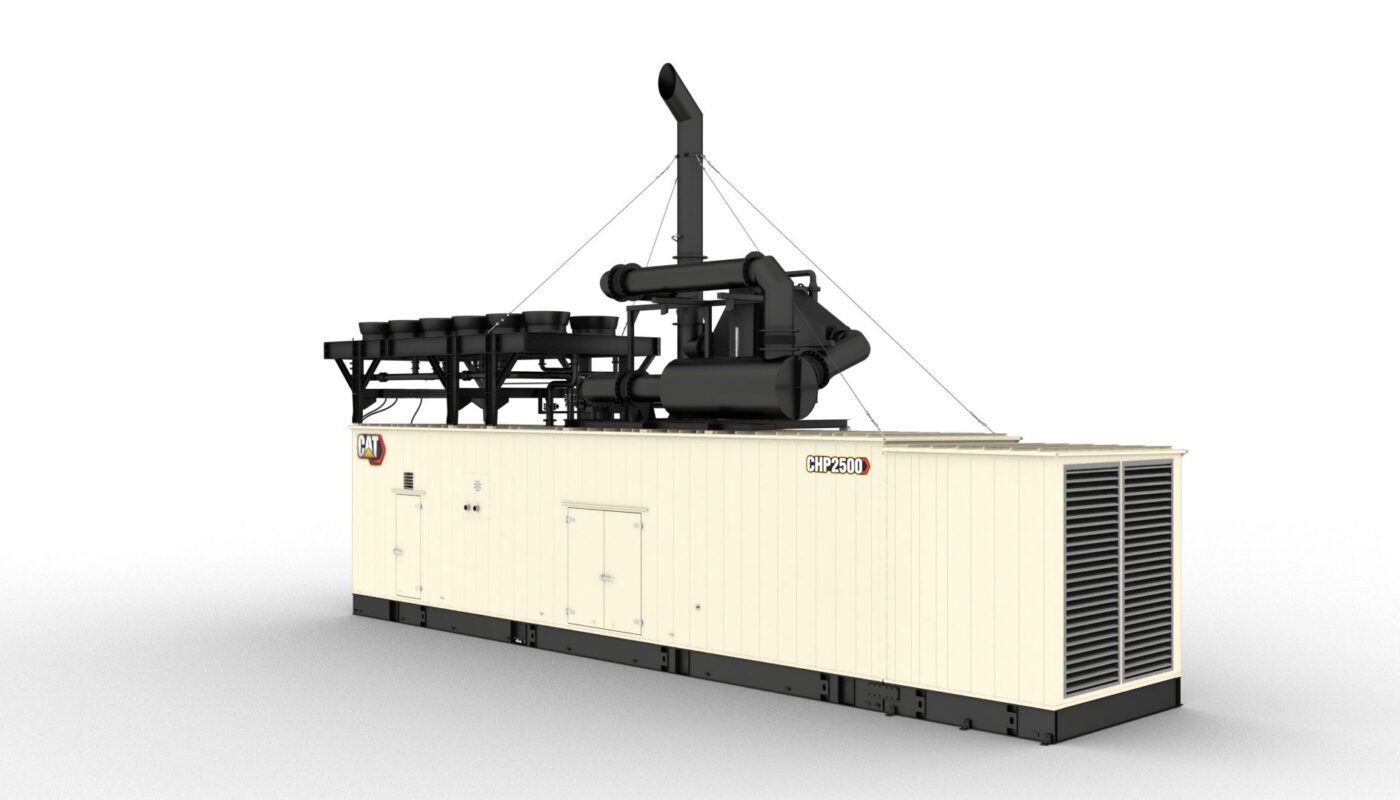What is CHP?
Combined heat and power (CHP), also known as cogeneration, is the simultaneous generation of useful thermal energy (usually in the form of steam or hot water) and electricity in a single integrated system. Instead of separate generation of electricity and useful thermal energy, CHP captures and utilizes the heat that would otherwise be wasted in conventional power generation processes. This results in significantly higher fuel efficiencies compared to separate generation of electricity and heat.
How does CHP work?
A typical CHP system consists of a prime mover such as a gas turbine, steam turbine, reciprocating engine or a fuel cell. The prime mover turns an electric generator to produce electricity. At the same time, the heat from the prime mover is recovered in the form of hot water, steam or thermal fluids. This recovered heat is then utilized for various heating applications such as space heating, hot water supply or industrial processes. Depending on the application and design, Combined Heat And Power (CHP) systems can achieve overall fuel efficiencies of over 80%. Some key components of a typical CHP system include:
Fuel Input: Natural gas, biomass or other fuels are used as inputs.
Prime Mover: Gas turbines, steam turbines, reciprocating engines, microturbines or fuel cells to convert the chemical energy of the fuel into mechanical energy and eventually electricity.
Heat Recovery System: To recover heat from the prime mover exhaust and engine cooling systems which would otherwise be wasted.
Electricity Generation: An electric generator converts the mechanical energy of the prime mover into electricity.
Thermal Energy Transfer: Recovered heat is transferred via hot water, low pressure steam or thermal fluid distribution systems for usage in space heating, industrial processes etc.
Benefits of CHP
CHP provides significant economic and environmental benefits compared to separate generation of electricity and heat. Some key advantages are:
Increased Energy Efficiency: By capturing and utilizing heat that would otherwise be wasted, overall fuel efficiency of CHP systems can be over 80%. This is much higher than separate systems with efficiencies of 33-45%.
Lower Energy Costs: Due to higher efficiencies, per unit energy costs are lower for CHP. It also provides protection against fluctuating fuel prices.
Reliable Power: On-site generation provides reliable power that is not prone to outages from the electric grid. It also reduces transmission and distribution losses.
Lower Emissions: Since CHP recovers heat that would otherwise be wasted, it reduces the amount of fuel required leading to lower emissions per unit of output. Some CHP technologies also qualify for renewable energy credits.
Opportunities for Waste Heat Recovery: CHP provides opportunities to recover and utilize low-grade waste heat from plants, data centers, refineries etc. that normally goes unused.
Applications of CHP
Due to the multiple benefits offered, CHP has widespread applications across many sectors:
– Industrial – Process heating, plant & facility energy, petrochemical, pulp & paper, refineries etc.
– Commercial – Hospitals, hotels & apartments, district heating & cooling, office buildings.
– Institutional – Universities, schools, military bases.
– Residential – Community CHP for district heating & cooling.
– Utility – Baseload and peak power, power quality services, microgrids.
Factors Driving Growth of CHP
Increasing focus on energy security and diversification is driving demand for decentralized on-site power generation such as Combined Heat And Power (CHP) Some other major factors fueling growth include:
– Stringent emission norms which favor cleaner CHP technologies over centralized power plants.
– Incentives and tax credits offered by governments to promote CHP adoption.
– Growing need for reliable and resilient power by industries and commercial facilities.
– Advancements in CHP technologies making them more viable for smaller scale applications.
– Utilization of renewable and waste fuels which integrates well with CHP.
– Maturing of low-carbon alternatives like biogas, fuel cells and hybrid solar-CHP.
CHP is an efficient distributed generation technology that offers energy, environmental and economic benefits. With the above factors augmenting demand across sectors, global CHP capacity is projected to witness substantial growth in the coming years. Wider acceptance and supportive policies will play a crucial role in unlocking its full potential.
*Note:
1. Source: Coherent Market Insights, Public sources, Desk research
2. We have leveraged AI tools to mine information and compile it.



